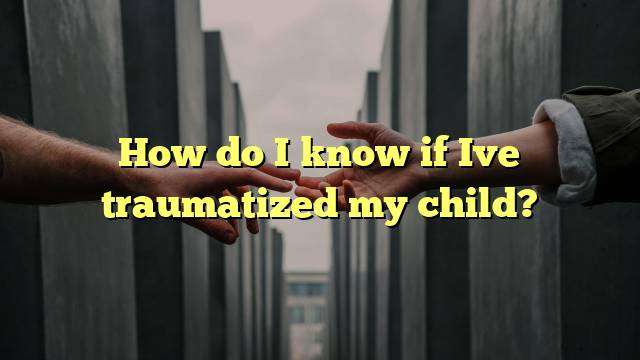How to Know if Your Child Has Been Traumatized
The signs of trauma in children and adults are often similar to those of depression. As a parent, it is important to be aware of the signs and take action if you suspect your child has been traumatized. Here are the signs to look out for and the steps you should take if your child has been traumatized.
Signs of Trauma in Children
When a child has been traumatized, they may show signs of depression, such as:
- Too much or too little sleep
- Changes in appetite, such as overeating or loss of appetite
- Unexplained irritability or anger
- Difficulties focusing on tasks, school work, and conversations
If your child is showing any of these signs, it is important to take action and seek help.
Steps to Take if Your Child Has Been Traumatized
The first step is to talk to your child and ask them what is wrong. It is important to be patient and understanding and to not rush them. They may be embarrassed or scared to talk about it. It is important to make sure your child knows that you will not be mad at them or think less of them for talking about it.
If your child does open up to you, it is important to listen to them. Make sure to take note of any details they give you and be sure to provide them with an outlet to talk about their trauma if they want to.
If your child is not comfortable talking to you, it may be helpful to seek out professional help. A therapist, social worker, or school counselor can be a great resource if your child is hesitant to talk to you. These professionals can help your child talk through and process their trauma in a safe and comfortable environment.
It is also important to take extra steps to ensure your child feels safe. Make sure your home is a comfortable and secure place for your child. If your child has been through a traumatic event, it is important to make sure they feel safe and secure at home.
Creating a Safe Environment for Your Child
Creating a safe environment for your child is essential. Here are some steps to ensure your child feels secure:
- Spend quality time with your child and maintain regular routines. This will help them to feel secure and reinforce the idea that they are safe and loved.
- Create a safe space in your home. This can be a special corner or room where your child can go to relax and feel secure.
- Be a consistent source of support. Let your child know that you are there for them and will always be there to support them.
- Encourage your child to express their feelings. It is important to let them know that it is ok to talk about their feelings and that you are there to listen.
- Be aware of triggers. If your child has been through a traumatic event, there may be certain triggers that can cause distress. It is important to be aware of these triggers and take steps to avoid them.
Creating a safe and secure environment for your child is the best way to help them heal from trauma.
Conclusion
Knowing how to recognize if your child has been traumatized is essential for any parent. It is important to be aware of the signs of trauma in children and take action if you suspect that your child has been through a traumatic event. Talking to your child and seeking help from professionals can be a great way to help your child process their trauma. Additionally, creating a safe environment for your child is essential for their emotional healing.



